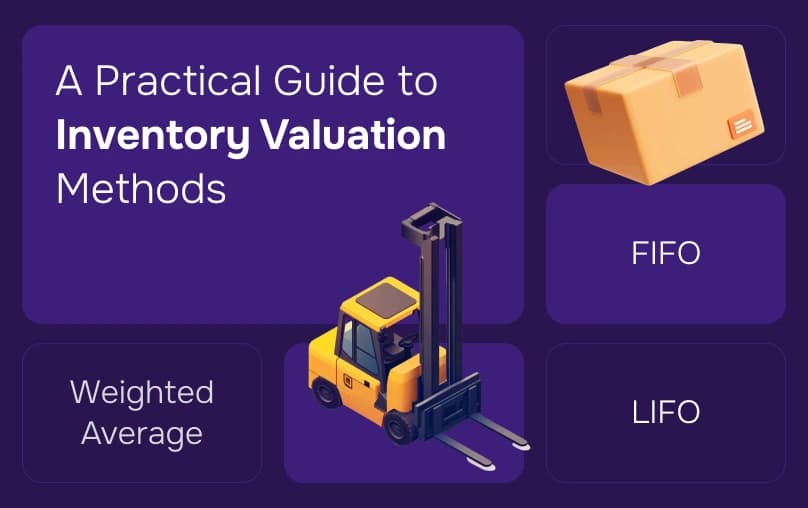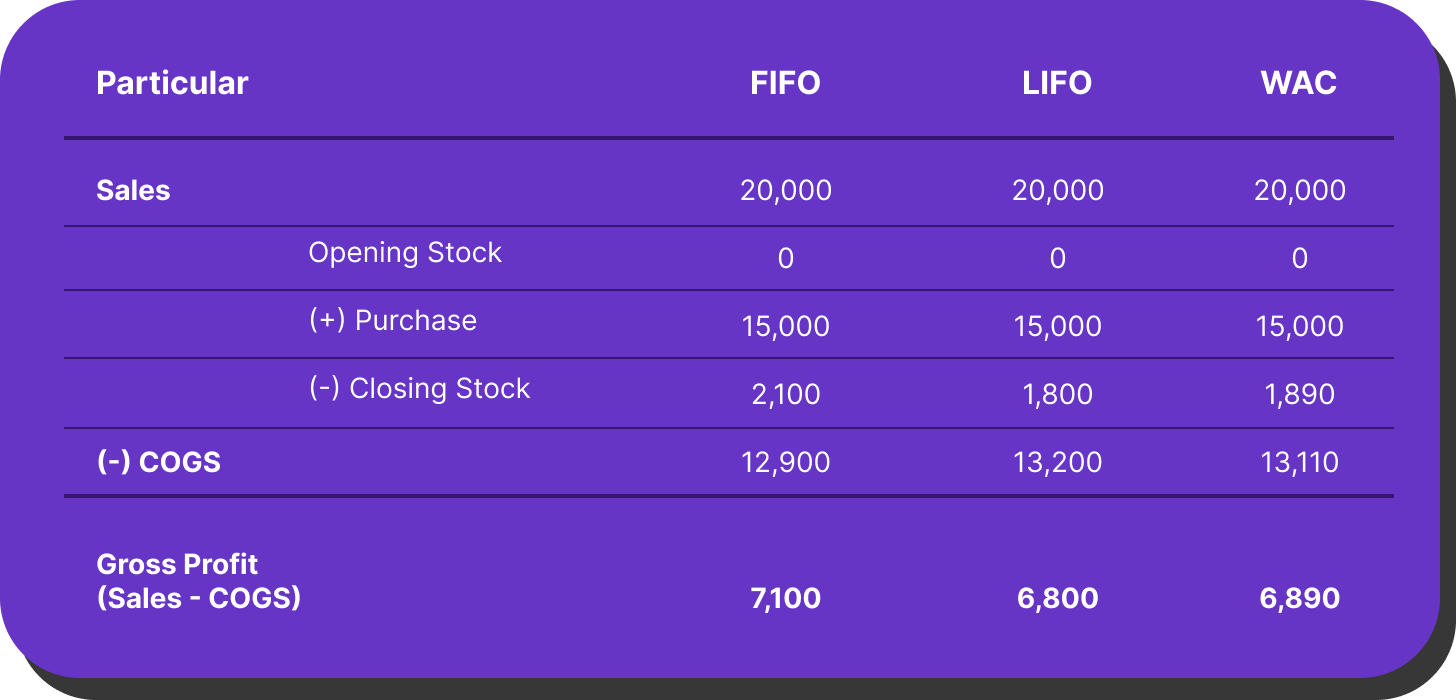
What is Inventory Valuation?
Inventory valuation is an essential accounting process that determines the financial value of unsold inventory at the end of an accounting period. This value can help you determine your inventory turnover ratio, which in turn will help you to plan your purchasing decisions.
Why Inventory Valuation Matters
Let’s say you run a business that supplies ergonomic office chairs to corporate clients. Same model, same design, just good reliable chairs bought in bulk throughout the year.
Now here’s the twist, every time you restocked, the price changed a little. Sometimes it was cheaper, other times your supplier hiked the rates. You didn’t think much of it because business was booming, orders kept flying out.
But now it’s the end of the year, and it’s time to evaluate what’s left in your warehouse.
You check your inventory records and realize,
You've got 60 office chairs still sitting in stock.
Easy, right? Just count them. But then comes the real head-scratcher.
How much are they worth?
You bought those 60 as part of different batches across the year, each at a different price. So now you can’t just slap a single rate on them and call it a day.
That’s where inventory valuation comes in.
It helps you decide what rate to use, whether it's based on the first ones you bought, the last ones, or a weighted average of all. And depending on the method you choose, your year-end financials could tell very different stories.
So, 60 chairs may be unsold, but how you value them makes all the difference.
What are the different inventory valuation methods?
There are three widely used inventory valuation methods:
1. FIFO (First-In, First-Out)
2. LIFO (Last-In, First-Out)
3. WAC (Weighted Average Cost)
1. FIFO (First-In, First-Out)
In FIFO, the items you purchased first are the ones considered to be sold first. So, your remaining stock is assumed to be from your latest purchases.
.gif)
FIFO: Good 1 enters first and leaves the inventory first.
2. LIFO (Last-In, First-Out)
In LIFO, the items you purchased last are the ones considered to be sold first. So, your remaining stock is assumed to be from your earliest purchases.
.gif)
LIFO: Good 4 enters last and leaves the inventory first.
3. WAC (Weighted Average Cost)
The WAC method uses the item’s average cost throughout the year.
The average cost per unit is calculated by dividing the total cost by the total number of units purchased during the year.
So, What Happens When You Apply FIFO, LIFO, or WAC?
Let’s break it down. The way you calculate the value of your leftover 60 chairs depends entirely on the inventory method you roll with. Here’s what each one would look like:

FIFO (First-In, First-Out)
FIFO means you sell the oldest chairs first. So, the unsold 60 are the newest ones.
In our case, the most recent purchase was in December, at $35 each.
FIFO Inventory Value = 60 × $35 = $2,100
LIFO (Last-In, First-Out)
LIFO flips it, you're selling the most recent stock first. So, the 60 chairs left are from the earliest batch, i.e January at $30 each.
LIFO Inventory Value = 60 × $30 = $1,800
WAC (Weighted Average Cost)
This one says, let’s not overthink it, just average it out.
We take the total amount spent ($17,310) and divide it by the total chairs bought (550) to get an average price.
WAC Price per Chair = 17,310 ÷ 550 = $31.5
WAC Inventory Value = 60 × $31.5 = $1,890
Which inventory valuation method should I use for my business?
Choosing the appropriate inventory valuation method isn’t just a bookkeeping decision, it’s a strategic one. The method you choose can significantly influence how your business looks on paper, how much tax you pay, and how attractive you look to banks or investors.
1. Applying for a Loan or Business Expansion
Let’s say you’re planning to apply for a business loan to expand operations or maybe open a new warehouse. Banks will want to see your balance sheet, and guess what they’re going to look at? Your inventory value because it’s one of the assets that adds weight to your application.
In this case, you want your closing stock value to be as high as possible. And based on our numbers:
• FIFO Inventory Value = 60 × $35 = $2,100
• LIFO Inventory Value = 60 × $30 = $1,800
• WAC Inventory Value = 60 × $31.5 = $1,890
FIFO comes out on top. It assumes the newest (more expensive) chairs are still in stock, which gives your balance sheet a nice little bump. That’s exactly what you want when you're trying to secure funding.
Pro tip: Use FIFO when prices are rising, and you want to reflect a higher inventory value.
2. Attracting Investors and Keeping Shareholders Happy
Now imagine you’re pitching to investors or reporting to shareholders. What’s one of the first numbers they look at? Profit. If your cost of goods sold (COGS) is lower, your profit looks higher, which makes you look like a smart, efficient business.
Let’s break it down using our numbers.

So, if your goal is to look profitable, especially in an inflationary environment, FIFO will make your financials shine.
3. Looking to Save on Taxes
But what if you're in savings mode? Maybe it’s tax season and you're not in the mood to overpay Uncle Sam.
Here’s where LIFO wins. Because it bumps up your COGS, it brings down your taxable income.
Let’s say your profit before tax using:
• FIFO leads to higher profit → higher taxes
• LIFO leads to lower profit → lower taxes
• WAC is, again, the middle ground
If the difference between FIFO and LIFO inventory values is $300 ($2,100 vs. $1,800), that $300 can reduce your taxable income, saving you 21% of $300 = $63 in taxes (assuming a 21% corporate tax rate).
So, if you want to keep more of your hard-earned money? LIFO is your friend.
Comparison at a Glance
.png)
Strategic Takeaways
Inventory valuation isn’t just about assigning numbers to what’s left in your warehouse, it’s a strategic decision that affects your financial reporting, tax planning, and investor appeal. Whether you choose FIFO, LIFO, or WAC depends on your goals, market conditions, and what story you want your numbers to tell. Choose wisely, because the method you use can shape the way your business is perceived.

Shekhar Mehrotra
Founder and Chief Executive Officer
Shekhar Mehrotra, a Chartered Accountant with over 12 years of experience, has been a leader in finance, tax, and accounting. He has advised clients across sectors like infrastructure, IT, and pharmaceuticals, providing expertise in management, direct and indirect taxes, audits, and compliance. As a 360-degree virtual CFO, Shekhar has streamlined accounting processes and managed cash flow to ensure businesses remain tax and regulatory compliant.
You might also like:
- What Free Cash Flow Reveals About a Business
- QuickBooks vs. Xero vs. Wave: Which One Really Fits Your Business?
- Understanding Activity-Based Costing: The Smarter Way to See Your Real Costs
- Why Cloud Accounting Is the Future of Financial Management
- Why Small & Medium Businesses (SMBs) Prefer a Certified QuickBooks ProAdvisor
Listen Exclusive Podcast On

